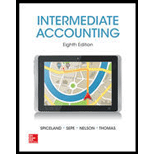
INTERMEDIATE ACCOUNTING
8th Edition
ISBN: 9780078025839
Author: J. David Spiceland
Publisher: McGraw-Hill Education
expand_more
expand_more
format_list_bulleted
Concept explainers
Question
Chapter 21, Problem 21.4BE
To determine
Statement of
Journal: Journal is the method of recording monetary business transactions in chronological order. It records the debit and credit aspects of each transaction to abide by the double-entry system
Rules of Debit and Credit:
Following rules are followed for debiting and crediting different accounts while they occur in business transactions:
- Debit, all increase in assets, expenses and dividends, all decrease in liabilities, revenues and stockholders’ equities.
- Credit, all increase in liabilities, revenues, and stockholders’ equities, all decrease in assets, expenses.
To Journalize: The given transaction of Company SBP, to determine the net effect of salaries expense incurred and paid in the accounting year.
Expert Solution & Answer
Want to see the full answer?
Check out a sample textbook solution
Students have asked these similar questions
I am looking for the correct answer to this general accounting question with appropriate explanations.
What was the increase in sales
What is the total variable overhead?
Chapter 21 Solutions
INTERMEDIATE ACCOUNTING
Ch. 21 - Effects of all cash flows affect the balances of...Ch. 21 - Prob. 21.2QCh. 21 - Prob. 21.3QCh. 21 - Prob. 21.4QCh. 21 - Prob. 21.5QCh. 21 - Prob. 21.6QCh. 21 - Prob. 21.7QCh. 21 - The sale of stock and the sale of bonds are...Ch. 21 - Does the statement of cash flows report only...Ch. 21 - Prob. 21.10Q
Ch. 21 - Perhaps the most noteworthy item reported on an...Ch. 21 - Prob. 21.12QCh. 21 - Given sales revenue of 200,000, how can it be...Ch. 21 - Prob. 21.14QCh. 21 - When determining the amount of cash paid for...Ch. 21 - Prob. 21.16QCh. 21 - When using the indirect method of determining net...Ch. 21 - Prob. 21.18QCh. 21 - Prob. 21.19QCh. 21 - Where can we find authoritative guidance for the...Ch. 21 - U.S. GAAP designates cash outflows for interest...Ch. 21 - Prob. 21.1BECh. 21 - Prob. 21.2BECh. 21 - Prob. 21.3BECh. 21 - Prob. 21.4BECh. 21 - Prob. 21.5BECh. 21 - Prob. 21.6BECh. 21 - BE 21–7
Installment note
LO21–3, LO21–6
On...Ch. 21 - BE 21–8
Sale of land
LO21–3, LO21–4, LO21–5
On...Ch. 21 - Investing activities LO215 Carter Containers sold...Ch. 21 - Financing activities LO216 Refer to the situation...Ch. 21 - Prob. 21.11BECh. 21 - Prob. 21.12BECh. 21 - Classification of cash flows LO213 through LO216...Ch. 21 - Determine cash paid to suppliers of merchandise ...Ch. 21 - Determine cash received from customers LO213...Ch. 21 - Prob. 21.4ECh. 21 - Prob. 21.5ECh. 21 - Prob. 21.6ECh. 21 - Determine cash paid for bond interest LO213...Ch. 21 - Determine cash paid for bond interest LO213 For...Ch. 21 - Determine cash paid for income taxes LO213...Ch. 21 - Prob. 21.10ECh. 21 - E21–11
Bonds; statement of cash flow...Ch. 21 - E21–12
Installment note: statement of cash flow...Ch. 21 - Prob. 21.13ECh. 21 - E 21–14
Identifying cash flows from investing...Ch. 21 - E 21–15
Lease; lessee; statement of cash flows...Ch. 21 - Prob. 21.16ECh. 21 - Indirect method; reconciliation of net income to...Ch. 21 - Prob. 21.18ECh. 21 - Prob. 21.19ECh. 21 - Prob. 21.20ECh. 21 - Prob. 21.21ECh. 21 - Indirect method; reconciliation of net income to...Ch. 21 - Prob. 21.23ECh. 21 - Prob. 21.24ECh. 21 - Prob. 21.25ECh. 21 - Prob. 21.26ECh. 21 - Prob. 21.27ECh. 21 - Prob. 21.28ECh. 21 - Prob. 21.29ECh. 21 - Prob. 21.30ECh. 21 - Prob. 21.31ECh. 21 - Prob. 21.32ECh. 21 - Prob. 1CPACh. 21 - Prob. 2CPACh. 21 - Prob. 3CPACh. 21 - Prob. 4CPACh. 21 - Prob. 5CPACh. 21 - Prob. 6CPACh. 21 - Prob. 7CPACh. 21 - Prob. 8CPACh. 21 - Prob. 9CPACh. 21 - Prob. 1CMACh. 21 - Prob. 2CMACh. 21 - Prob. 3CMACh. 21 - Prob. 21.1PCh. 21 - Prob. 21.2PCh. 21 - Prob. 21.3PCh. 21 - Prob. 21.4PCh. 21 - Prob. 21.5PCh. 21 - Prob. 21.6PCh. 21 - Prob. 21.7PCh. 21 - Prob. 21.8PCh. 21 - Prob. 21.9PCh. 21 - Prob. 21.10PCh. 21 - Prob. 21.11PCh. 21 - Prob. 21.12PCh. 21 - Prob. 21.13PCh. 21 - Prob. 21.14PCh. 21 - Prob. 21.15PCh. 21 - Prob. 21.16PCh. 21 - Prob. 21.17PCh. 21 - Prob. 21.18PCh. 21 - Prob. 21.19PCh. 21 - Prob. 21.20PCh. 21 - Prob. 21.21PCh. 21 - Prob. 21.1BYPCh. 21 - Prob. 21.2BYPCh. 21 - Prob. 21.3BYPCh. 21 - Prob. 21.5BYPCh. 21 - Prob. 21.6BYPCh. 21 - Prob. 21.7BYPCh. 21 - Prob. 21.8BYPCh. 21 - Prob. 21.10BYPCh. 21 - Research Case 219 FASB codification; locate and...Ch. 21 - IFRS Case 2110 Statement of cash flows...
Knowledge Booster
Learn more about
Need a deep-dive on the concept behind this application? Look no further. Learn more about this topic, accounting and related others by exploring similar questions and additional content below.Similar questions
- What is the amount of current assetsarrow_forwardSubject: Accountingarrow_forwardLeague of Legends Systems plans to produce 30,000 units next period at a denominator activity of 60,000 direct labor hours. The direct labor wage rate is $15.00 per hour. The company’s standards allow 3 yards of direct materials per unit, and materials cost $8.50 per yard. The company’s budget includes variable manufacturing overhead of $2.80 per direct labor hour and fixed manufacturing overhead. Using 60,000 direct labor hours as the denominator activity, compute the predetermined overhead rate and break it down into variable and fixed elements.arrow_forward
- Saran Enterprises sells a product for $45 per unit and has a contribution margin ratio of 60%. Fixed expenses total $180,000 annually. How many units must be sold to yield a profit of $72,000? (Rounded to number)arrow_forwardI am trying to find the accurate solution to this general accounting problem with the correct explanation.arrow_forwardProvide Answerarrow_forward
- Kawasaki Corporation had accounts receivable of $12,800 at the beginning of the month and $7,500 at the end of the month. Credit sales totaled $68,000 during the month. Calculate the cash collected from customers during the month, assuming that all sales were made on account.arrow_forwardCan you explain this financial accounting question using accurate calculation methods?arrow_forwardPlease provide the accurate answer to this general accounting problem using valid techniques.arrow_forward
arrow_back_ios
SEE MORE QUESTIONS
arrow_forward_ios
Recommended textbooks for you
- Principles of Accounting Volume 1AccountingISBN:9781947172685Author:OpenStaxPublisher:OpenStax College
 AccountingAccountingISBN:9781337272094Author:WARREN, Carl S., Reeve, James M., Duchac, Jonathan E.Publisher:Cengage Learning,
AccountingAccountingISBN:9781337272094Author:WARREN, Carl S., Reeve, James M., Duchac, Jonathan E.Publisher:Cengage Learning,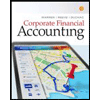 Corporate Financial AccountingAccountingISBN:9781305653535Author:Carl Warren, James M. Reeve, Jonathan DuchacPublisher:Cengage Learning
Corporate Financial AccountingAccountingISBN:9781305653535Author:Carl Warren, James M. Reeve, Jonathan DuchacPublisher:Cengage Learning 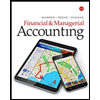 Financial & Managerial AccountingAccountingISBN:9781337119207Author:Carl Warren, James M. Reeve, Jonathan DuchacPublisher:Cengage Learning
Financial & Managerial AccountingAccountingISBN:9781337119207Author:Carl Warren, James M. Reeve, Jonathan DuchacPublisher:Cengage Learning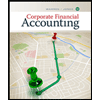 Corporate Financial AccountingAccountingISBN:9781337398169Author:Carl Warren, Jeff JonesPublisher:Cengage Learning
Corporate Financial AccountingAccountingISBN:9781337398169Author:Carl Warren, Jeff JonesPublisher:Cengage Learning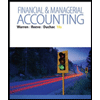 Financial & Managerial AccountingAccountingISBN:9781285866307Author:Carl Warren, James M. Reeve, Jonathan DuchacPublisher:Cengage Learning
Financial & Managerial AccountingAccountingISBN:9781285866307Author:Carl Warren, James M. Reeve, Jonathan DuchacPublisher:Cengage Learning

Principles of Accounting Volume 1
Accounting
ISBN:9781947172685
Author:OpenStax
Publisher:OpenStax College

Accounting
Accounting
ISBN:9781337272094
Author:WARREN, Carl S., Reeve, James M., Duchac, Jonathan E.
Publisher:Cengage Learning,

Corporate Financial Accounting
Accounting
ISBN:9781305653535
Author:Carl Warren, James M. Reeve, Jonathan Duchac
Publisher:Cengage Learning

Financial & Managerial Accounting
Accounting
ISBN:9781337119207
Author:Carl Warren, James M. Reeve, Jonathan Duchac
Publisher:Cengage Learning

Corporate Financial Accounting
Accounting
ISBN:9781337398169
Author:Carl Warren, Jeff Jones
Publisher:Cengage Learning

Financial & Managerial Accounting
Accounting
ISBN:9781285866307
Author:Carl Warren, James M. Reeve, Jonathan Duchac
Publisher:Cengage Learning